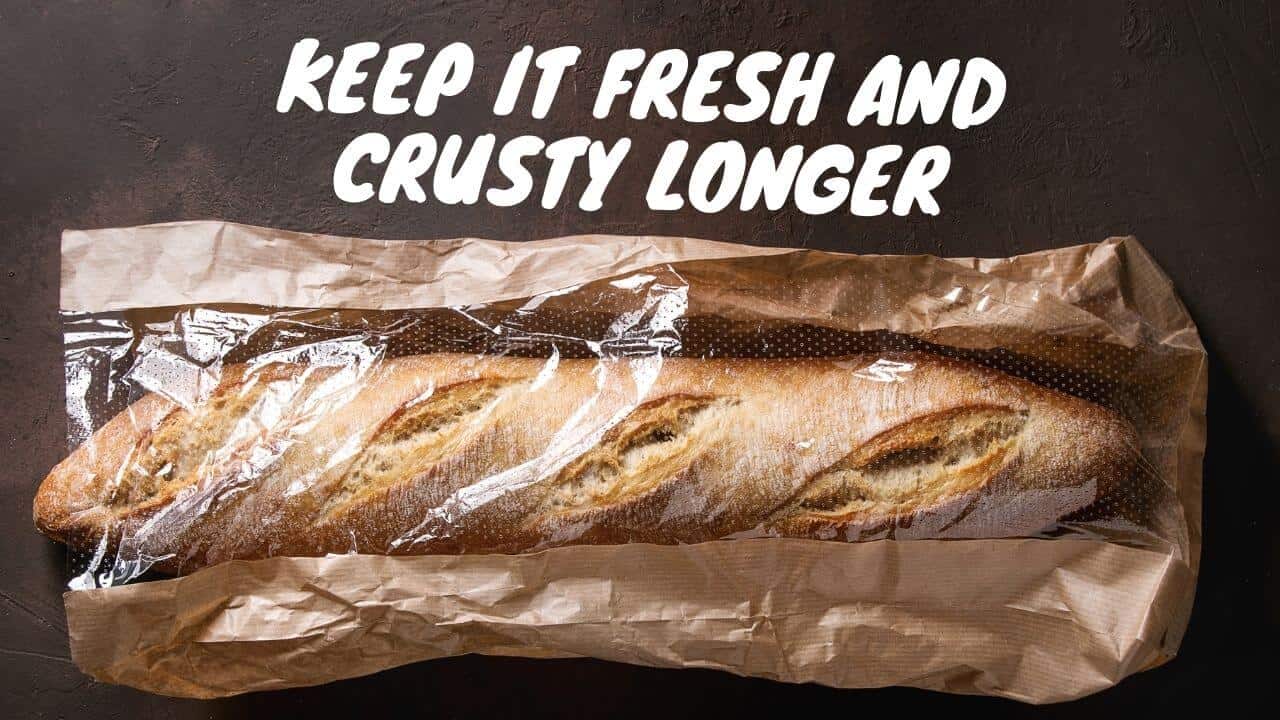There are few foods as delicious as freshly baked bread with its enchanting aroma, crispy crust, and soft fluffy interior. But unless you plan on eating the whole loaf right away, keeping bread fresh and crispy might pose a challenge.
Loaves made without sugar or fat, such as sourdough, baguette, or ciabatta, can dry out within a day or two. They will become stale, and hard, and lose their flavor.
There are several techniques you can use, depending on the type of bread and when you are planning to eat it.
Let’s take a look at some of the effective tips and tricks for keeping your baguettes, buns, and loaves fresh longer and how to revive them so that they would taste like fresh out of the oven again.
How To Keep Homemade Bread Fresh?
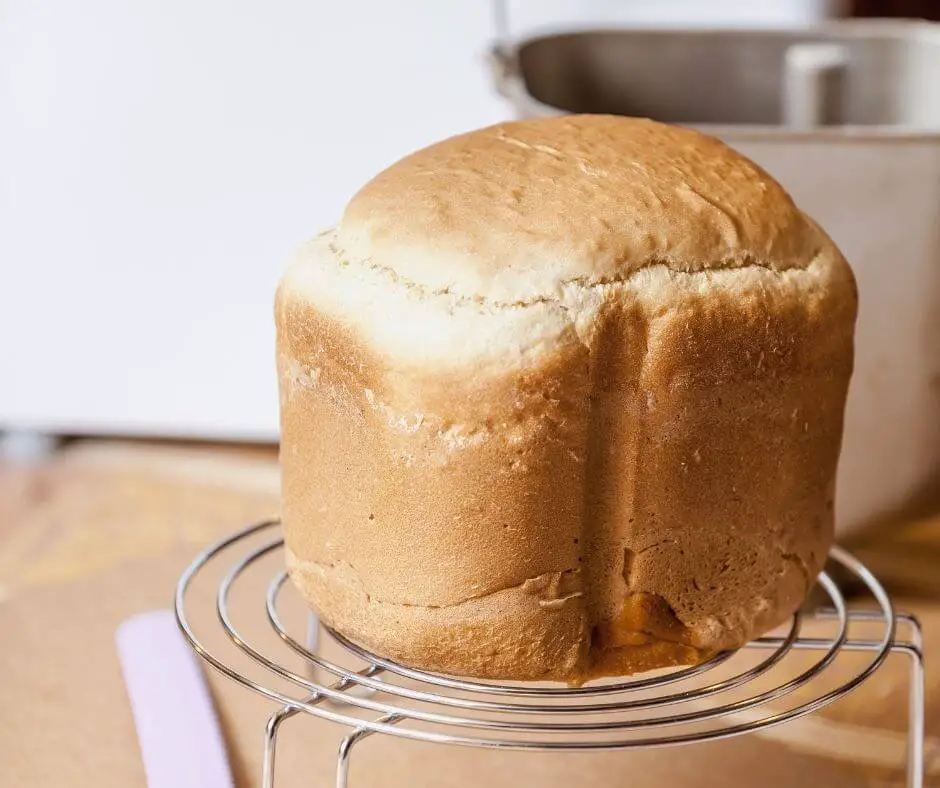
As soon as you have baked a fresh loaf, whether you used a loaf pan in the oven or bread machine, it is a good idea to remove it from the baking tin and let it cool or ‘rest’ on a rack. This stops the bottom crust from getting soggy.
Always let the bread cool completely before storing it away. To keep home-baked crusty loaves fresh and crusty on the top, leave them unwrapped, or just cover them lightly with a clean cotton tea towel and at room temperature for the first day.
You can keep the bread cut side down on a wooden chopping board to stop the inside drying out, or else keep the heel of the crust and keep that to cover the cut piece. After a day, put crusty homemade loaves in a closed paper bag or the breadbox.
However, if you have soft-crusted loaves, these do best when tightly wrapped in plastic or foil, or airtight bags, at room temperature. Of course, after they have completely cooled down.
How Should You Keep Store-Bought Bread?
Whether you have come home with a baguette, a sliced loaf, crusty buns, or another tasty bakery product, it is useful to know how best to store these.
There are various factors influencing the shelf life of store-bought bread. Remember that the bakery bread or sandwich loaf from the store will often use preservatives to stop and prevent mold and give them a longer shelf-life.
Store-bought bread typically keeps at room temperature for anywhere from a couple of days to a week. The exact time will depend on the type of bread, the ingredients used to make it, and how you store it. The ‘best before’ date on store-bought bread is just a guideline. It might go bad before that date or last for up to several days afterward.
In general, sore bought bread that you are going to eat within a few days of buying, keep it wrapped in its original plastic bag, and on the countertop or in the bread box. There is no need to keep it in the fridge.
How To Store Fresh Baguette Or Crusty Bakery Loaf?

If you have bought a baguette from a local grocery store or crusty bakery loaf from an artisanal bakery then it is best to eat it on the same day you bought it as these will turn stale quite quickly.
If you do have some leftovers and you want to keep the crust crusty then it is best to store it in a paper bag, bread box, or just covering it with a clean kitchen towel. Just make sure it is in a dry place and has decent air circulation. You can also keep it in a plastic bag or even wrap it in foil, but because of lack of air circulation, the moisture will build up, and your baguette won’t be as nice and crusty the next day anymore.
If you did purchase a warm baguette that was placed in a plastic or paper bag, keep the bag open or remove it, so that it won’t trap the bread’s moisture and make the crust go soft and soggy.
Reviving A Stale Baguette In The Oven
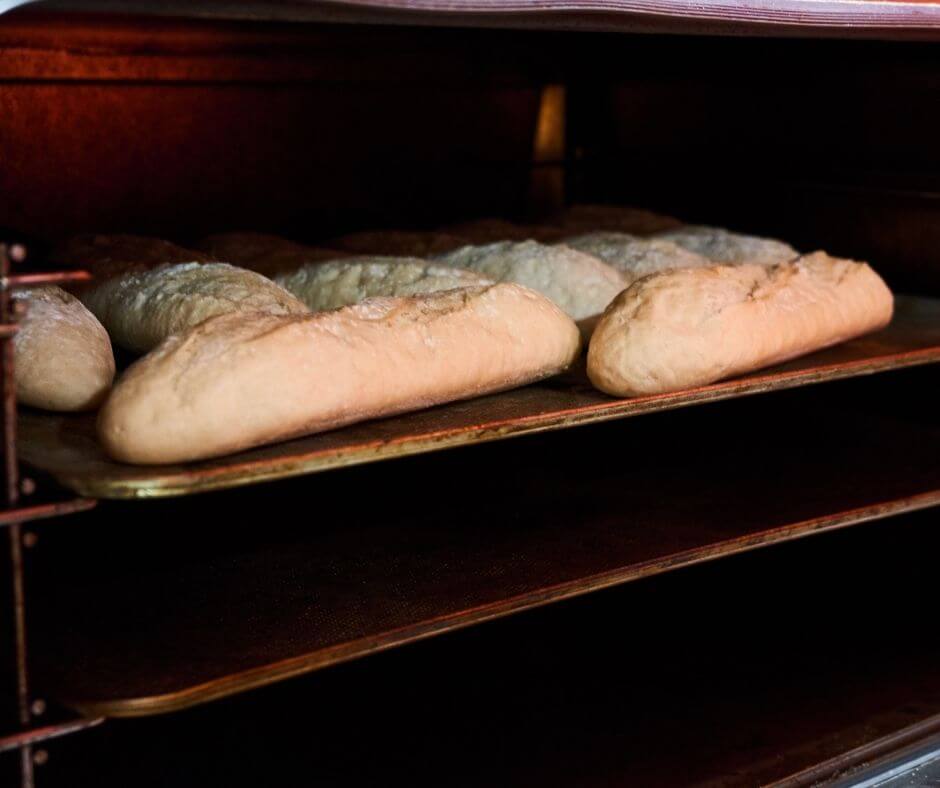
Even if your once-delicious French banquette has gone stale, you can still revive it.
The following instructions are good for a fresh or defrosted loaf:
- Preheat the oven to 320°F (160°C) and set a rack in the center.
- Run or spray a little water over the bottom of the baguette to add moisture.
- Now put the baguette into the fan-assisted or conventional oven and bake it for 8-10 minutes.
- The moisture you added to the baguette will create steam in the oven that makes it soft inside and crisp up the crust outside.
If you are trying to revive a larger artisan loaf then follow the same instructions above, just increase the time in the oven for about 5 minutes.
Get a Reusable Linen Baguette Bags For Shopping And Storage
You might like to invest in a reusable bread bag. These are eco-friendly and versatile, as well as machine-washable. Take it to the store with you and put the fresh baguette right in there.
It won’t tear like a paper bag, or trap moisture like a plastic bag and get crumbs all over the countertop. A reusable bread bag will keep your baguette as fresh as a paper bag would or even better as it is made of breathable materials.
Storing Bread In The Fridge Or Freezer
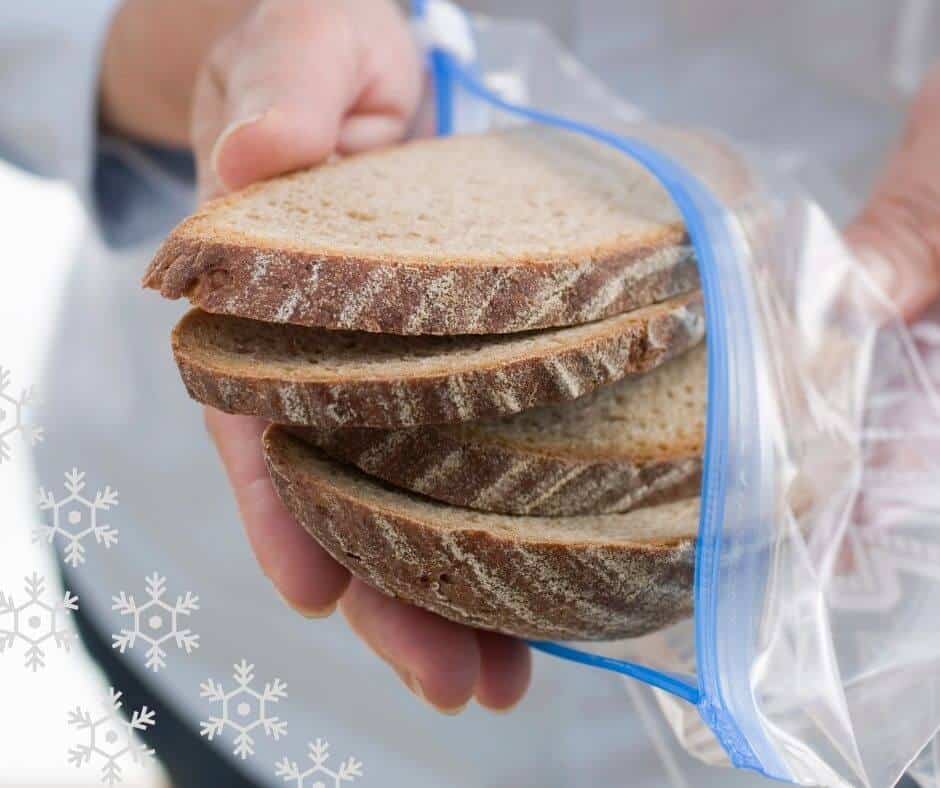
Under normal conditions, keeping loaves in the refrigerator won’t give you much advantage if any at all. Some experiments have even shown that refrigerating bread can be counterproductive and make the bread stale faster. [1]
The refrigerator could perhaps increase the self-life of the bread in very humid, hot weather, but if you really want to extend the self-life of your loaf long-term then it is best to freeze it.
When freezing bread, wrap it in foil or plastic wrap, and then in a sealed zipper bag. Frozen bread can last for 5 to 6 months, but unfortunately, it will start losing some of its moisture and flavor if you keep it in there for more than 2 months.
It is a good idea to slice the bread before freezing it so you can remove however many slices you want at one time. This also means it will thaw faster because you can separate the slices. You can even take a frozen slice from the freezer and pop it in the toaster. Just turn your toaster timer up a bit than if you were toasting a regular, unfrozen slice.
When thawing a frozen loaf, take it out of the freezer and allow it to thaw entirely before unwrapping. Doing so will allow the loaf to reabsorb some of the moisture. Once the bread has come to room temperature, pop in the oven for 8-10 minutes as I noted in the instruction above.
Remember that freezing bread might not kill any dangerous compounds in bread but it does stop them from growing.
Do Bread Boxes Really Work?
There is a reason why a lot of people keep bread in a breadbox or bin. In the 1960s almost every home in the United States had one and now breadboxes are making a comeback.
Unlike a plastic bag, a well-designed breadbox is designed to keep bread fresh allowing the bread to bread and keep some of its best characteristics, like the crispy crust and soft interior, while keeping out pests or scavenging pets and reducing the danger of the bread getting moldy.
The breathable aspect of a breadbox also means any trapped moisture can escape, resulting in the bread staying crusty longer. You can expect bread stored in a breadbox to be kept for a couple of days longer than in a plastic bag.
A breadbox might not be necessary if you only eat pre-sliced loaves, but if you want to keep homemade or artisan loaves fresh for a few days, it might be a good investment.
A flat-topped breadbox allows you to store other pantry items on top. Most bakers prefer a wooden breadbox with a roll-top front, but my favorite is a ceramic breadbox with a bamboo cutting board base like this one here on Amazon. It also works great keeping my bagels from going stale.
A good tip is to put one loose slice of bread in there, alongside your loaf. The bigger surface area will attract any moisture, and you can throw that slice out after using the loaf.
Also, make sure you don’t overstuff it, leave enough room there for the loaves to breathe. And always keep it clean, tidy, and odor-free. If you have forgotten a slice there somewhere in the back corner that has gone moldy, it will contaminate the contents of the whole box.
Is Mold Bad For You?
Even though some kinds of mold aren’t necessarily harmful to consume, it is difficult to determine if the mold on your loaf is harmful or not. Some molds can produce mycotoxins which can cause an upset stomach.
If you see mold, you should get rid of the whole loaf.
If you want to know what happens to you if you accidentally eat moldy bread or if toasting will get rid of mold then read my latest article here: This Is What Happens To You If You Eat Moldy Bread!
The Best (And Worst) Places In The Kitchen To Keep Bread
Some people like to keep their bread on top of the refrigerator, but this is potentially one of the worst places to choose! The heat that your refrigerator gives out will cause bread in a paper bag to dry out and bread in a plastic bag to mold quicker. The same is true about keeping it near the dishwasher, tea kettle, or coffee machine. Fresh bread does not deal well with the moisture and heat these appliances put out.
Choose a cool, dry part of the kitchen, such as on the countertop, in the pantry, kitchen cupboard, or even in a deep drawer.
Read Also: How Do You Store Keto Cloud Bread?
Good Ways To Use Stale Bread
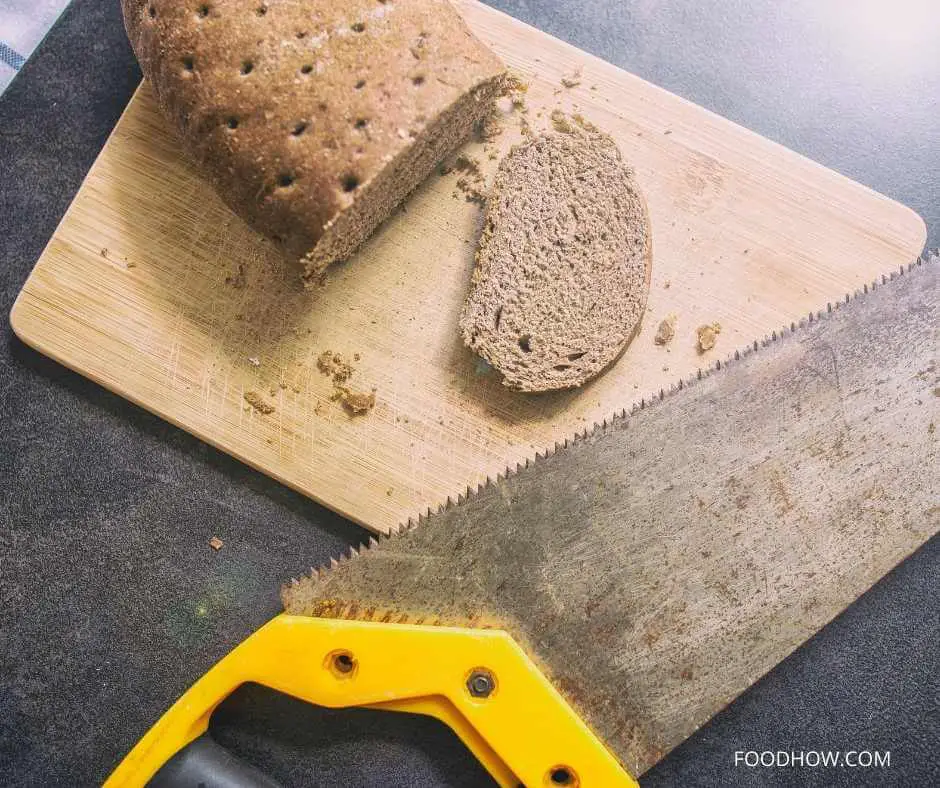
If you find that you have some bread that has gone a bit hard, you don’t have to throw it out. You can still use it to make bread pudding, breadcrumbs, or croutons. Stale baguette slices can be slathered with butter, parsley flakes, and fresh garlic and warmed up in a warm oven to make garlic bread toast! As a last resort, dogs quite like to nibble on hard bread!
Below are a few easy ideas on how you can use stale bread.
Making Croutons
Do you like to eat soup? How about soup with crunchy croutons?
A loaf of stale bread is perfect for homemade croutons. In fact, the staler it is, the faster your croutons will cook since fresher bread takes longer to dry out in the oven.
- Cut the bread into cubes of your preferred size, using a sharp serrated knife.
- Spread them on a baking tray and drizzle some oil over them.
- Bake at 375°F (190°C) for 10 minutes or until golden brown.
Making Toast With Stale Baguettes
- Cut the stale baguette into thin slices with a serrated knife.
- Put them in a toaster or toast them under the broiler, turning halfway.
- Slather them with butter and your favorite toast topping, and serve hot.
Other Ways To Use Bread Past Its Prime
- Tear it into pieces (or cut it with a knife if it’s very stale) to make the stuffing. When combined with onion, eggs, herbs, and chicken broth, this makes a delicious stuffing or dressing to accompany roasted chicken or turkey.
- Pulse stale French bread in a food processor to make fine breadcrumbs.
- Layer stale baguette slices in a baking dish with custard over them, then leave to soak for half an hour. Add chocolate chips and/or raisins, and bake at 325°F (160°C) for 50-60 minutes, or until golden brown.
So the next time you smell the aroma of deliciously fresh baked baguette or artisan loaf and you wonder whether buying a whole loaf will be a waste, remember that you can enjoy some immediately and then store it well to preserve it longer. This way you get to enjoy the whole loaf without any leftovers at all!
Read Also: Which Type of Yeast Is Best For Bread Machines? Make a Loaf You Can Be Proud Of!
